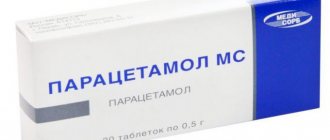General information
Miosis is a term used by ophthalmologists to designate a condition in which the pupil narrows significantly in diameter (less than 2.5 mm). This condition is both a variant of the norm (observed in certain groups of people and in certain situations) and a pathology.
The size of the pupil is regulated due to the tone of the internal muscles of the eye. The sphincter, innervated by parasympathetic fibers, ensures pupil contraction (miosis), and the dilator, innervated by sympathetic fibers, is responsible for pupil dilation (mydriasis).
Since the sphincter located in the iris and responsible for miosis is not controlled by human consciousness, it reflexively contracts:
- with a sudden increase in lighting intensity;
- during accommodation of the eye.
That is why miosis as a physiological norm is characteristic:
- for older people (accommodation changes as the lens loses elasticity);
- for infants in the first months of life;
- for people suffering from farsightedness;
- as a reflex reaction to the brightness of lighting;
- in case of physical or mental overstrain;
- for any person in a state of sleep.
Miosis also develops as a result of taking certain medications.
Acute poisoning
Develops 3-5 hours after inhalation of arsenous hydrogen, which goes unnoticed.
Symptoms: general malaise, weakness, chills, then headache, pain in the pit of the stomach, nausea, shortness of breath, vomiting (in severe cases, continuous). Increased body temperature, tachycardia, shortness of breath, severe thirst, dry throat. The liver and spleen are enlarged, jaundice. In the blood - severe anemia (hemoglobin drops to 50 g/l, even to 33 g/l), leukocytosis, increased ESR, hyperbilirubinemia. Urine is dark in color with a reddish tint, sometimes the color of red wine, contains a lot of protein, single red blood cells, cylinders. Oliguria. The excretion of arsenic in urine in the first few days can reach 5-6 mg/h.
Anemia may increase over 5-10 days, then decrease, a large number of reticulocytes and basophilic granular erythrocytes appear in the blood, jaundice decreases, and the urine gradually becomes lighter. During this period, symptoms of polyneuritis with sensory disturbances are observed. In severe cases, oliguria increases, symptoms of uremia, severe shortness of breath, and convulsions appear. Consciousness persists almost until death.
Forms of miosis
The form of miosis can be bilateral (symmetrical) or unilateral.
Bilateral constriction of the pupil can be observed:
- with age-related changes in the organs of vision and farsightedness that are natural for old age;
- with increasing light intensity;
- during sleep;
- with some types of coma (uremic, diabetic, pancreatic, narcotic and alimentary-dystrophic);
- during intoxication (primarily miosis, as a dose-independent symptom, manifests itself in opiate poisoning);
- with local and parenteral use of certain medications;
- in the presence of certain somatic and venereal diseases.
Bilateral miosis can also occur with brain lesions in the cerebellum or pons (the pupils narrow to a “pinhead”). It manifests itself especially clearly with direct lesions of the midbrain, when its lower parts are affected, and with increased intracranial pressure, causing secondary compression of the brainstem.
Unilateral miosis occurs when:
- local administration of miotic drugs into only one eye;
- damage to the sympathetic nervous system, which manifests itself as Horner's syndrome. In addition to the narrowing of the pupil, there is ptosis of the upper eyelid, a weakened reaction of the pupil to light, dyshidrosis of the face (affected half), and the eyeball sinks;
- local damage to the eye (miosis is noted only on the side where there is a foreign body in the cornea, etc.);
- irritation of the oculomotor nerve or its nuclei. Occurs due to meningitis and encephalitis, with multiple sclerosis, lesions of the spinal cord and brain. A combination of miosis with pupil immobility is possible.
- Paralysis of the vagus nerve and sympathetic fibers of the neck in patients with lesions of the apical posterior segments due to tuberculosis.
Constriction of the pupil is also characteristic of acute iritis, ulcerative keratitis, anterior and posterior uveitis, and traumatic hyphema.
First aid for acute poisoning
Bed rest. Complete peace. Warm. Medical supervision as severe symptoms may develop several hours after exposure. In the first hours before the onset of hemolysis - bloodletting 300 ml followed by blood transfusion, intravenous administration of glucose - 500 ml of a 10% solution with ascorbic acid 300-500 mg drip. Subcutaneous administration of isotope sodium chloride solution - up to a liter. Drip enemas of 5% glucose solution (500 ml), insulin (5-10 units) subcutaneously. Introduction of alkalis. Diathermy of the kidney area. Novocaine blockade according to Vishnevsky. Adrenalin. For severe vomiting - injections of morphine with magnesium sulfate. Intravenous administration of 20-30 ml of 30% sodium thiosulfate solution. Oxygen inhalation. Immediate injection of mecaptide subcutaneously or intramuscularly, 1 ml of 40% oil solution: on day 1, 3 injections every 4-5 hours, on days 2 and 3, 2 injections every 8-12 hours.
Unithiol, especially in cases of renal failure, is contraindicated. For persistent anuria, the use of hemodialysis using an artificial kidney apparatus is indicated. For chronic intoxication - restorative treatment.
Types of miosis
Depending on the cause of miosis, the following types are distinguished:
- Functional. Constriction of the pupil is caused by natural causes and is normal.
- Drug-induced (reactive) miosis is caused by taking medications that, in addition to their main effect, have a stimulating effect on the sphincter or suppress the functioning of the dilator.
- Paralytic. It occurs due to dilator paralysis caused by pathological processes localized near the carotid plexus (located around the carotid artery), the ciliospinal center (the sympathetic cervical nerve originates from it) or the cervical sympathetic trunk.
- Spastic or miosis of irritation (usually bilateral). It is caused by a spasm of the sphincter caused by stimulation of the parasympathetic nervous system. It can develop in the presence of tumors in the brain, meningitis and encephalitis, multiple sclerosis, uremia, the formation of cavities in the spinal cord (syringomyelia), during the tonic phase that occurs during an epileptic attack.
- Syphilitic. Develops as a result of penetration of the causative agent of syphilis into the central nervous system. Treponema pallidum, which has penetrated the nervous system, leads to the appearance of symptoms of meningitis, ischemic or hemorrhagic stroke, meningomyelitis, which are characterized by miosis. It can develop at any stage of the disease, but with timely treatment it is rare.
Miosis, in which constriction of the pupil occurs as a consequence of taking medications, is caused by:
- adrenergic blockers - block receptors that respond to the mediators adrenaline and norepinephrine. Used to treat arrhythmia, hypertension, urological diseases, etc.;
- cholinergic stimulants (acetylcholine and its derivatives). Used to treat glaucoma, mydriasis caused by the use of atropine, to eliminate adhesions between the lens and the iris, as well as to treat certain diseases of the gastrointestinal tract and bladder;
- M-cholinomimetics - pilocarpine, used for the treatment of glaucoma and intraocular hypertension, and gliatin, used for traumatic brain injury in the acute period, for cerebral circulatory disorders and for multi-infarct dementia. It is also used in the presence of psychoorganic syndromes characterized by memory impairment, disorientation, etc. Miosis after the use of gliatin occurs as a result of the breakdown of the drug into glycerophosphate and choline, which is involved in the biosynthesis of acetylcholine.
Symptoms
reaction of the pupil to light
The ability to see objects clearly is lost with myopia and farsightedness. In such people, the pupils most often constrict when trying hard to see something without glasses. In infants and older people, the pupils constrict much more often. People who are intensely engaged in mental or physical labor also complain of periodic pupil reduction. To avoid this, you need to alternate types of work and take a break between them. If your eyes become infected, you should consult a doctor.
Miosis can be unilateral or bilateral. Unilateral may be a symptom:
- incipient and developing diseases of the nervous system;
- vagus nerve palsy;
- instilling medicine into one eye;
- eye damage;
- detection of a foreign object in it.
Bilateral miosis can also occur due to injuries, poisoning and other physical and biological relapses. It is observed in sleep, with increasing light intensity, and in certain brain diseases. What is hypermetropia and how to treat it, read our article.
Treatment and prevention
Physiological miosis, which is the most common type, does not require treatment. If the pupils have narrowed as a result of taking medications, they will also return to normal on their own when the drug is removed from the body.
Paralytic, spastic and syphilitic miosis requires etiotropic therapy, i.e. eliminating the cause of the underlying disease and its consequences.
Since it is not always possible to independently diagnose the type of miosis, consultation with an ophthalmologist is necessary. You should immediately consult a doctor if poisoning is suspected, as well as with unilateral narrowing of the pupil, since it is unilateral miosis that can be a sign of pathology.
To prevent miosis after eye surgery, the doctor prescribes eye drops. The development of miosis is prevented by timely detection of vascular disorders and other pathological conditions of the body.
How can you get poisoned by arsenic?
Due to the widespread occurrence of this metal in nature, the environment, and in various industries, there are many ways of poisoning with this poison:
- Inhalation of toxic vapors,
- Eating foods treated with herbicides
- Drinking untreated water
- Excessive consumption of seafood (shrimp, oysters, mussels),
- Violation of safety regulations when working with alloys, paints and other toxic substances,
- Exceeding the dose of medications containing arsenic (novarsenol, aminarsone, miarsenol and others),
- Intentional poisoning in an attempt to kill or for suicidal purposes.
Arsenic can enter the body in 3 ways : through the lungs by inhaling vapors, through the digestive tract, through the skin and mucous membranes.
The most dangerous thing is inhalation of arsine (arsenic hydrogen) contained in the air; even small concentrations in the air - up to 0.05 mg/l - cause poisoning, and if it is about 5 mg/l - instant death occurs.
Questions are often asked: is it possible to get poisoned by a temporary filling that the dentist puts in to “kill” the nerve? Poisoning is unlikely, because a tiny dose of a toxic substance is applied, and after 2 days the seal is removed. If it remains in the tooth for a longer time, then not only the nerve, but also the tooth itself is destroyed, and stomatitis may develop.
Modern dental offices are abandoning the use of arsenic, replacing it with new, safer agents.
Diagnostics
For your information! If physiological reasons for the appearance of a symptom are excluded, the following diagnostic measures are prescribed, which can help explain the origin of the pathology:
- examination of the eyeball using an ophthalmic slit lamp ;
- checking pupil reaction to light;
- MRI and ultrasound of the eye;
- perimetry (study of visual fields of the organs of vision);
- fundus examination.
In some cases, miosis may indicate vascular and neurological pathologies.
Therefore, if the ophthalmologist does not find any violations on his part, the patient needs to undergo additional examination by a neurologist.










